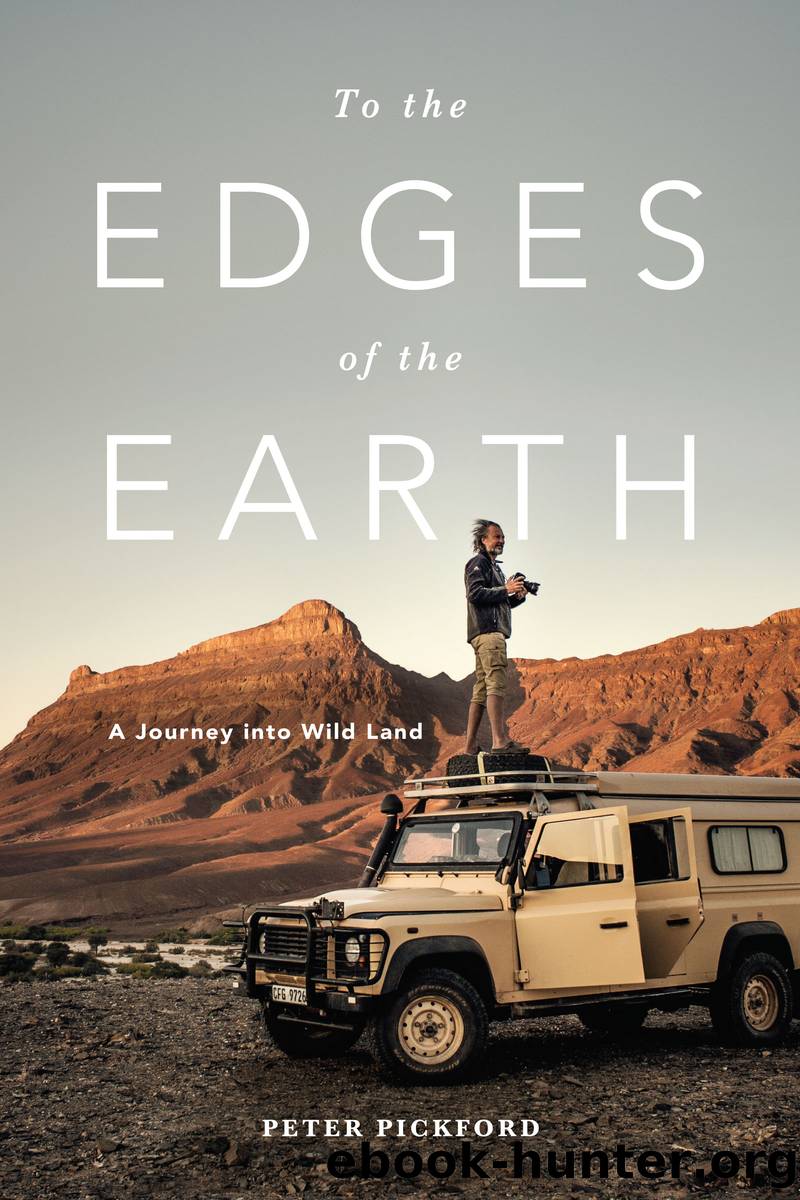To the Edges of the Earth by Peter Pickford

Author:Peter Pickford
Language: eng
Format: epub
Publisher: Bookstorm Publishers
Published: 2020-10-26T12:56:28+00:00
20 SEPTEMBER
A light snow has fallen, its white cloak softening the raw, utilitarian ugliness of the town. A group of drunks, whose revelry kept us awake most of the night, lie sprawled fully clothed across their hotel bedroom, with the lights on and the door open. We leave town early as the clouds become tinged with pink, following a narrow tar road out to a set of twin lakes, known as Ngoring and Gyaring, or Eling and Zhaling in Chinese, away to the northwest. These lakes lie within a wetland protection buffer zone, in the Yellow River catchment, part of the vast Sanjiangyuan National Nature Reserve.
Recognising the value of the Tibetan Plateau to the ecology of China, the government has established three sprawling, contiguous nature reserves: Chang Tang (334 000 square kilometres), which means âNorthern Plainâ, in the west; Hoh Xil (100 000 square kilometres), also known as Kekexili, which means âBlue Ridgeâ, in the centre; and Sanjiangyuan (94 500 square kilometres) in the east. Sanjiangyuan means âThree River Headwatersâ, as the three main rivers of China â the Yangtze, the Yellow and the Mekong â rise in this reserve, thereby protecting Chinaâs principal watershed.
Although these reserves will protect the range of the endangered chiru (Tibetan antelope) and other associated wildlife species, there is a downside. With half the Tibetan Plateau being set aside as nature reserves, and with traditional pastoralists being moved off the land and resettled, the sustainable coexistence of wild animals and human pastoralists that has persisted for thousands of years is ending. The proposal to set up a UNESCO World Heritage Site on the Plateau has drawn attention to the debate around the zone system proposed by the government for these reserves. There will be a Core Zone (all residents resettled, no grazing or people allowed, wildlife protected), a Buffer Zone (partial resettlement with limited and rotational grazing) and an Experimental Zone (partial resettlement, eco-tourism and green industries). The Tibetans are counter-proposing community control and management of land, with some set aside for the protection of wildlife, maintaining healthy rangeland, taking fences down, and patrolling the land against intrusion by poachers.
The road is peaceful and the country open and it is not long before we start to see wildlife: a group of goa far out on the plain, and later two kiang (wild ass), but the light beneath a brooding, low sky is still too dark for photographs. Thin tendrils of smoke issue from the occasional, distant nomad tents, the travellersâ flocks still sleeping in close huddles around their centre. There are many small ponds and lakes beside the road and the black silhouettes of ducks and geese stand out against their silver surface. As the day lightens, we find two rare black-necked cranes, only 4 200 of which are left in the world, feeding towards the tailings of one of the shallow lakes. We walk out onto a muddy plain and work our way slowly towards them. The air is chill, snow thin on the ground.
Download
This site does not store any files on its server. We only index and link to content provided by other sites. Please contact the content providers to delete copyright contents if any and email us, we'll remove relevant links or contents immediately.
Man-made Catastrophes and Risk Information Concealment by Dmitry Chernov & Didier Sornette(5898)
The Revenge of Geography: What the Map Tells Us About Coming Conflicts and the Battle Against Fate by Kaplan Robert D(4025)
Zero Waste Home by Bea Johnson(3761)
COSMOS by Carl Sagan(3535)
Good by S. Walden(3467)
In a Sunburned Country by Bill Bryson(3466)
The Fate of Rome: Climate, Disease, and the End of an Empire (The Princeton History of the Ancient World) by Kyle Harper(2988)
A Wilder Time by William E. Glassley(2803)
Camino Island by John Grisham(2749)
The Ogre by Doug Scott(2619)
Organic Mushroom Farming and Mycoremediation by Tradd Cotter(2615)
Human Dynamics Research in Smart and Connected Communities by Shih-Lung Shaw & Daniel Sui(2458)
Energy Myths and Realities by Vaclav Smil(2422)
The Traveler's Gift by Andy Andrews(2393)
9781803241661-PYTHON FOR ARCGIS PRO by Unknown(2309)
Inside the Middle East by Avi Melamed(2293)
Birds of New Guinea by Pratt Thane K.; Beehler Bruce M.; Anderton John C(2214)
A History of Warfare by John Keegan(2170)
Ultimate Navigation Manual by Lyle Brotherton(2116)
